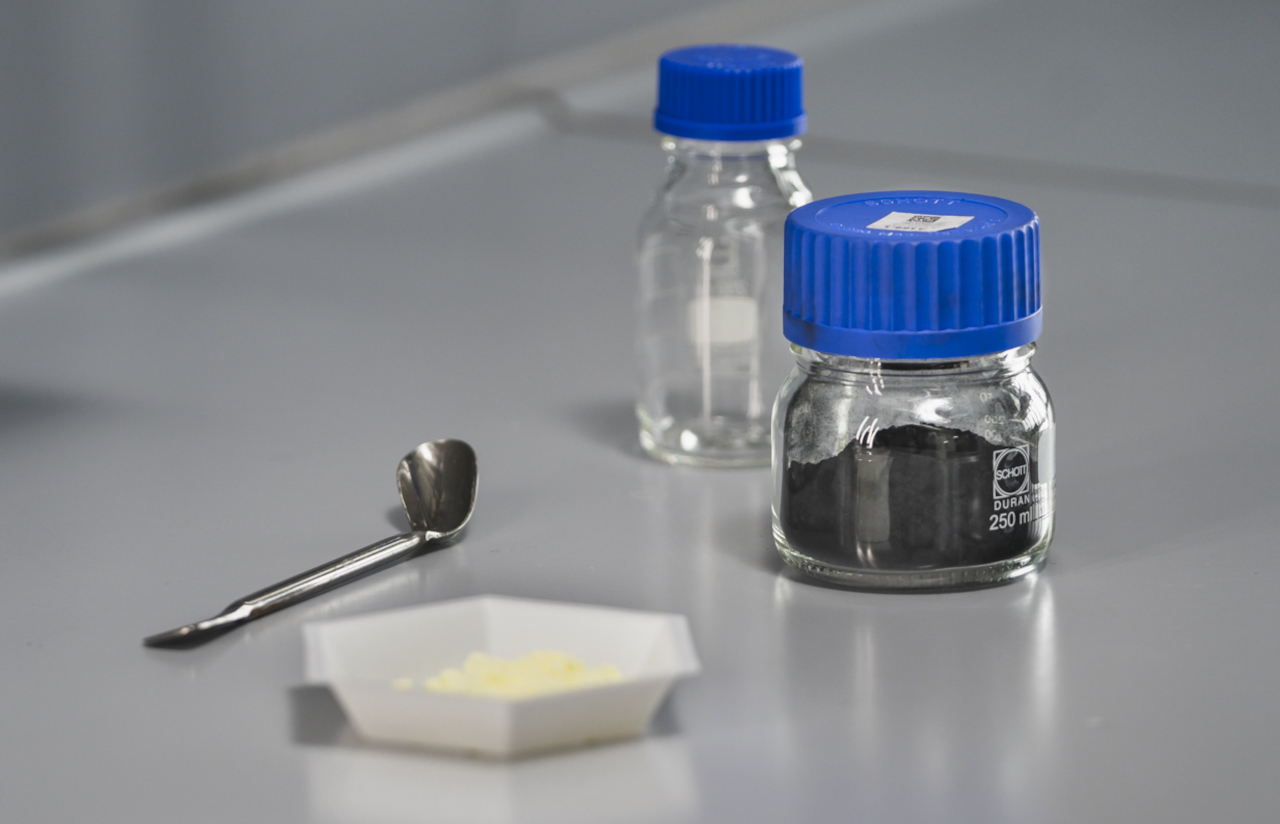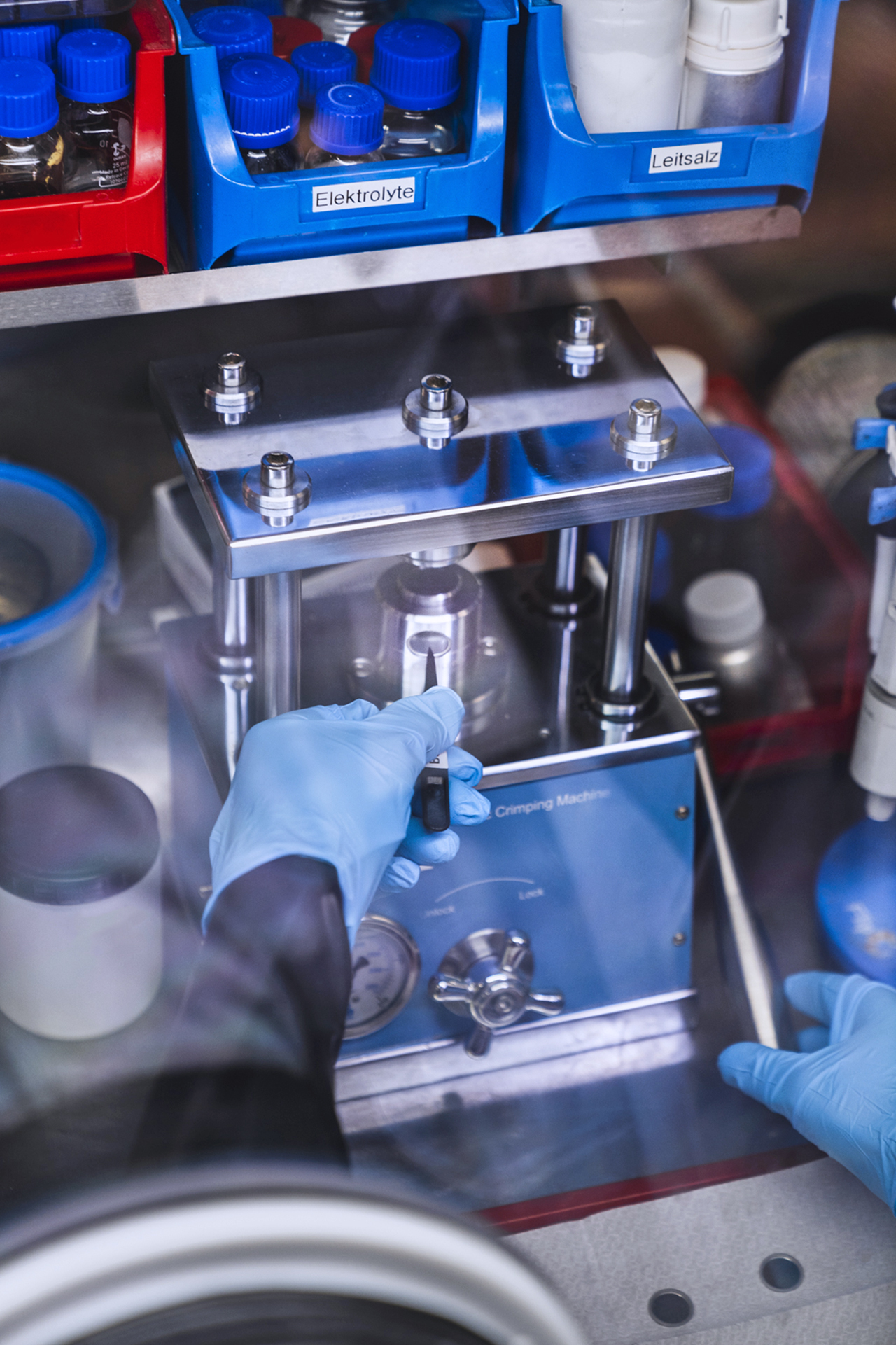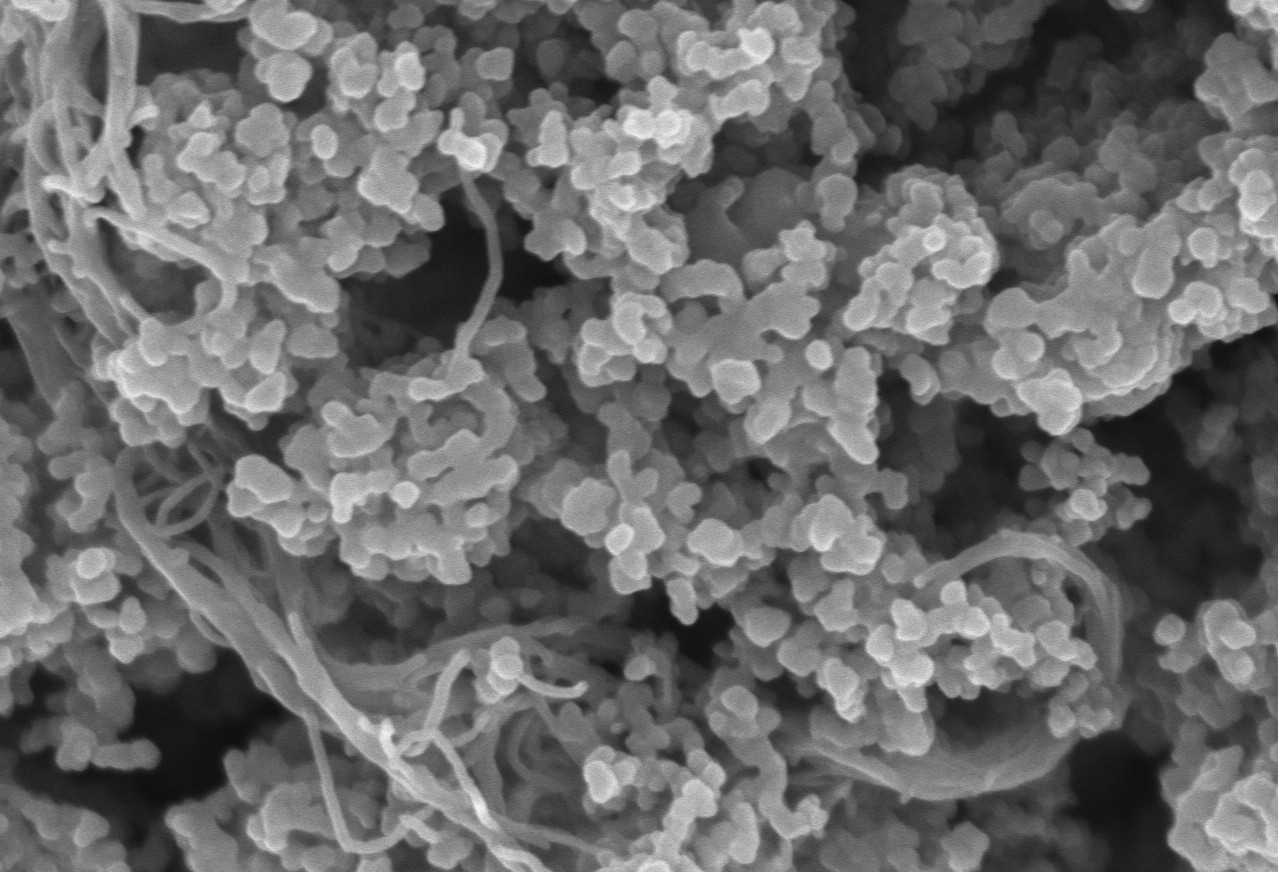Active and passive materials significantly determine the performance of battery cells. The holistic evaluation of materials includes chemical and structural characterization as well as processing into electrodes and cells and their electrochemical investigation. Electrochemical properties can thus be correlated with structural properties. We set our own standards with the development of new electrode materials for lithium-ion, lithium-sulfur and solid-state batteries.



New Active Materials for Lithium-ion Batteries
Silicon anodes promise significant increases in the energy density of lithium-ion battery cells compared to conventional graphite anodes. Fraunhofer IWS is investigating the use of this material system with up to 100% Si content. Approaches to compensate the strong volume changes during lithiation on material and electrode level are investigated. A selection of current work can be found here:
- Schlaier, J. et al.: Electrochemical Patterning of Cu Current Collectors: An Enabler for Pure Silicon Anodes in High‐Energy Lithium‐Ion Batteries
Advanced Materials Interfaces, July 2022, DOI: 10.1002/admi.202200507
https://publica.fraunhofer.de/entities/publication/1b8bc28a-1f94-4660-9f6e-bba74e95b864
Materials Research for the Lithium-sulfur Battery
The development of Li-S batteries has been a research focus at Fraunhofer IWS since 2010. Porous carbon materials, proprietary electrolyte systems and new anode concepts are used in coin and pouch cells and investigated close to the application. Thus, a holistic fundamental understanding is built up and the innovations are protected in a patent portfolio. This forms the basis for the development of ultralight prototype cells for new fields of application.
- Schmidt, F. et al.: The importance of swelling effects on cathode density and electrochemical performance of lithium-sulfur battery cathodes produced via dry processing
Energy technology, 10 (2022), Nr. 2, Art. 2100721, DOI: 10.1002/ente.202100721
https://publica.fraunhofer.de/handle/publica/271359
Material Innovations for the Solid-state Battery
Sulfide solid electrolytes are characterized by high ionic conductivity and good processability and form the basis for a new generation of high-performance battery cells. At the same time, adaptation to the electrode materials and new concepts, especially for the anode, are required. This is where Fraunhofer IWS comes in with its own innovations and was able, for example, to demonstrate the use of 100% silicon anodes in full cells for the first time. Porous carbons also offer a new approach for storing metallic lithium in the solid-state battery anode.
- Cangaz, S. et al.: Surface Functionalization of LiNi7.0Co0.15Mn0.15O2 with Fumed Li2ZrO3 via a Cost-Effective Dry-Coating Process for Enhanced Performance in Solid-State Batteries
Batteries & Supercaps, May 2022, DOI: 10.1002/batt.202200100
https://publica.fraunhofer.de/entities/publication/54b237a9-1b48-49c0-9b41-aca202b1b692
 Fraunhofer Institute for Material and Beam Technology IWS
Fraunhofer Institute for Material and Beam Technology IWS